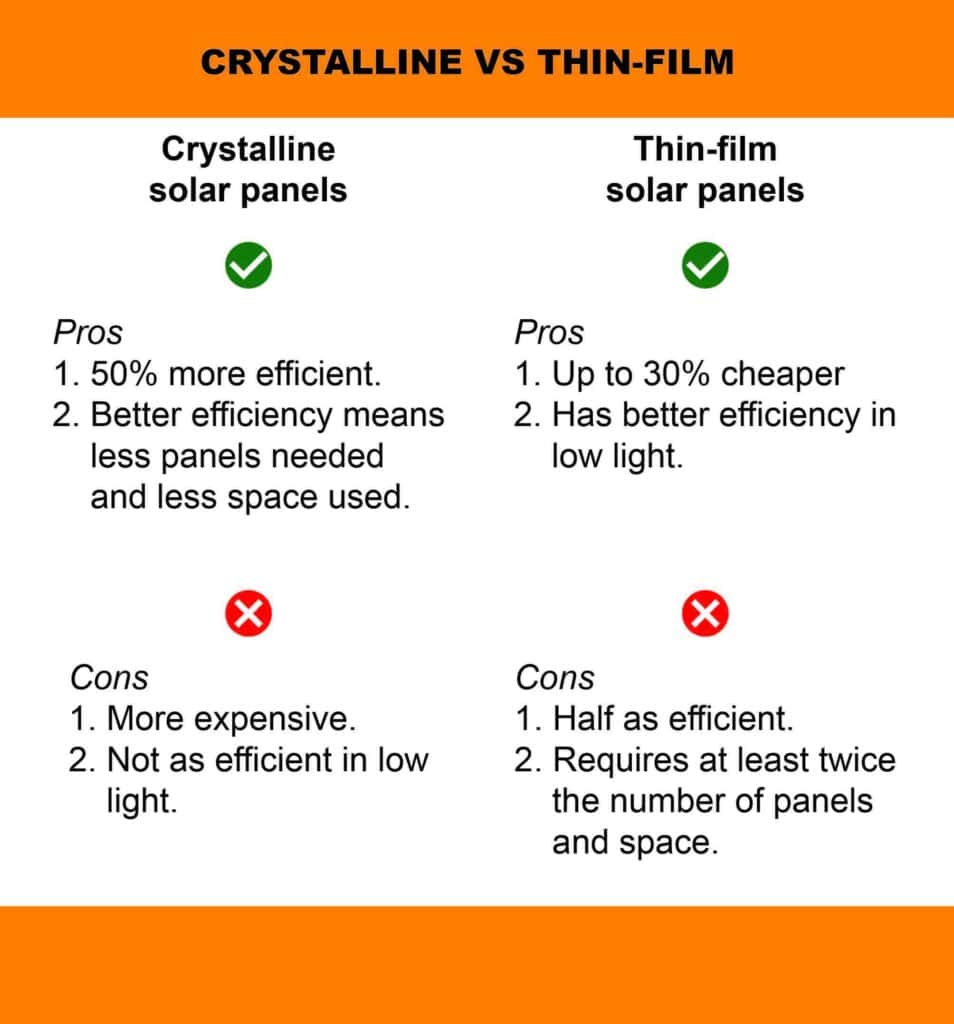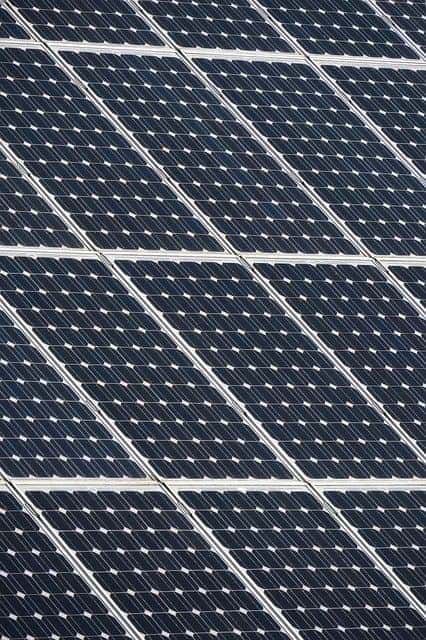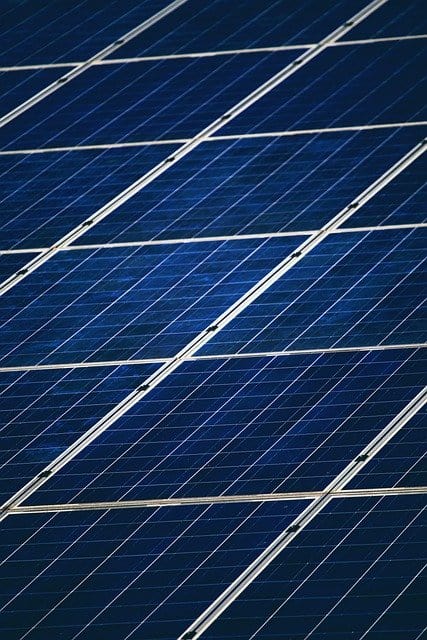Table of Contents
What’s the best type of solar panel?
Inevitably, when you decide to go solar, the question of what type of solar panel you should get will come up.
Type here is the cell or panel technology (Poly, mono or thin-film) and not the brand (e.g., Canadian, JA Solar, Sunrun etc).
There are a lot of different cell technologies. For a home or business owner, you only strictly need to be concerned about two, namely Polycrystalline (Poly) and Monocrystalline (Mono).
You have a third option in Thin Film solar cells, but they’re not as effective as the other two. I explain why below.
Which is the best type of solar panel and why?
Polycrystalline and monocrystalline solar panels, Poly and Mono for short, are the most used solar cell technologies around the world.
This is because they are the most efficient at converting solar energy into electricity.
90% of the solar market is crystalline solar cells. Both poly and mono are crystalline.
The alternative to mono and poly is thin-film. 10% of the solar market is thin-film solar panels. Why the big gap in use?
Crystalline solar cells like poly and mono have an enormous advantage over thin-film in that they are twice as efficient. You get almost double the energy using half as many panels.
Not sure what “the efficiency” of a solar panel is? Check out my beginner’s guide to solar panels, where I explain it.

Monocrystalline solar panels
Monocrystalline solar panels are the most efficient on the market.
The efficiency of a monocrystalline panel ranges between 15-22% although some manufacturers are producing cells of up to 25% cell efficiency.
That is why mono is the best type of solar panel when compared to any other panel on the market today.
How are they made?
Made from a single slice of pure silicon crystal, monocrystalline solar cells have an even black colour which allows them to absorb more photons.
This contributes to their improved efficiency when compared to polycrystalline.

Polycrystalline solar panels
Polycrystalline solar panels are less efficient than monocrystalline.
The efficiency of a polycrystalline panel ranges between 15-20%. Some manufacturers produce both poly and mono with the same efficiency.
How are they made?
Polycrystalline comprises small bits of crystal. That’s what gives the solar panels the “broken bits of glass stuck together” appearance.
Because they are made from tiny bits of crystal, this makes them cheaper to manufacture than mono, which requires one large piece.
Polycrystalline panels may take on a more bluish aspect because of how light bounces off the small crystals.

Thin-film solar panels
With thin-film cells, you get solar panels that are cheaper by up to 30%.
If only they were more efficient. Their efficiency ranges between 7-12%.
What you “save” on cost you make up for by having to buy more panels to offset the reduced energy output.
Unless the efficiency of thin-film improves, they will remain the least attractive option for solar panels.
Poly Vs mono, which is better?
Which solar panel should you get? Honestly, either poly or mono will do.
If, however, you have very limited space and you want to get every drop of energy from your system, then you want to go with Monocrystalline solar panels.
If the look of a solar panel is important to you, get monocrystalline since they have a darker colour that blends better with the background.
Remember, some manufacturers offer both types of solar panels with the same power output but with a tiny difference in efficiency.
In most cases, thin-film should be your last option but only if you have the space and if you can get your hands on them.
Thin-film might be an option for a simple, small installation like lighting a tool shed or driveway.
Are those your only options?
For now, yes. Poly and mono are the most easily available. There are other options, but they can be difficult to get or more expensive.
Other cell technologies are on the rise. Most, like bifacial solar panels, are still far too expensive for a typical solar installation.
Bifacials are two-sided solar panels that absorb solar energy from both the “top” and “underside”.
Mono and poly are monofacial solar panels since only one side absorbs solar energy.
Bifacials are better suited for commercial or utility scale installations.
Conclusion
What should you take away from this post if you’re looking for the best type of solar panels in Zimbabwe and you’re not sure which to get?
Either monocrystalline and polycrystalline solar panels will work just fine. If the price difference isn’t too big, go for monocrystalline.
Think you’re in the know about solar? Take the 5-minute Solar 101 Quiz and test your knowledge.